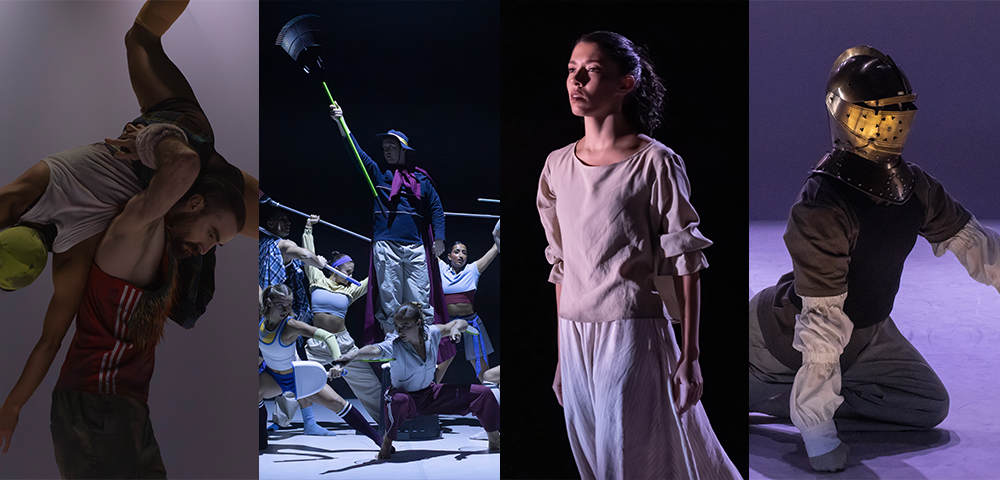
Four Daughters – REVIEW

Filmmaker Kaouther Ben Hania takes a familiar trope – the nearly inevitable philosophical clash between mothers and daughters – and turns it into masterfully composed meta-cinema with tremendous style and substance.
The substance: a mother, Olfa, and her four daughters, Ghofrane, Rahma, Eya, and Tayssir, living in Tunisia during a time of societal upheaval that infiltrates the intimacies of family life. The style: Brechtian, with an unmistakable nod to Lars von Triers’ Dogville, (as the director remarked in a publicity interview), implementing a vivid, singular vision that reflects and refracts the family’s complexities (and complexes).

Ghofrane and Rahma are absent, and the story centres around the lead-up and aftermath of their leave-taking. Because of their absence, and the challenge of reliving the past, director Ben Hania hired actresses to portray the two daughters, as well as the mother, Olfa. Her double, played by Tunisian actress Hind Sabri (well known in the Arab world), and the daughter-doubles, are able to question the overarching narrative in rehearsal workshops that might themselves double as therapy (for everyone).

In one scene, this odd extended family is shown sprawled across a room-sized bed, discussing impressions of their father’s late-night, drunken drop-ins. In another, Olfa’s low-life boyfriend lies in a druggy haze while Eya plays her past and present self; the actor (who plays all the male roles) is so disturbed he cuts short the scene.
Throughout Four Daughters, the visual impact is carefully and beautifully composed, the story messy and disturbing. The contrast mirrors the film’s saturated artifice, of glossy lipstick, feverishly youthful complexions and reds, reds, reds, or white dresses in creepily childish death games, or the black of the niqab. Scenes are imprinted like tricky still-lifes in an imagined breeze, all but engulfing the details of the story.
But not quite.
You will see these women, the actresses and the mother and the daughters, in all their facets of illusion and disillusion, and the screen will not fade.
★★★★
In cinemas now









